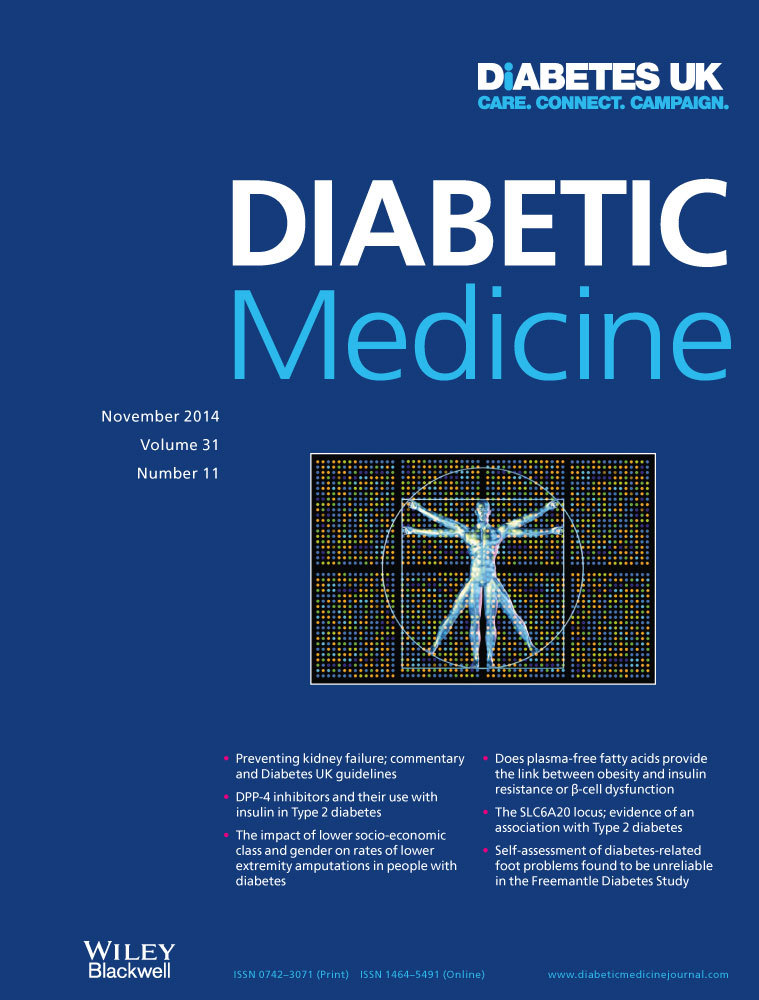Motivation, effort and life circumstances as predictors of foot ulcers and amputations in people with Type 2 diabetes mellitus
Abstract
Aim
To investigate the predictive value of both patients' motivation and effort in their management of Type 2 diabetes and their life circumstances for the development of foot ulcers and amputations.
Methods
This study was based on the Diabetes Care in General Practice study and Danish population and health registers. The associations between patient motivation, effort and life circumstances and foot ulcer prevalence 6 years after diabetes diagnosis and the incidence of amputation in the following 13 years were analysed using odds ratios from logistic regression and hazard ratios from Cox regression models, respectively.
Results
Foot ulcer prevalence 6 years after diabetes diagnosis was 2.93% (95% CI 1.86–4.00) among 956 patients. General practitioners' indication of ‘poor’ vs ‘very good’ patient motivation for diabetes management was associated with higher foot ulcer prevalence (odds ratio 6.11, 95% CI 1.22–30.61). The same trend was seen for ‘poor’ vs ‘good’ influence of the patient's own effort in diabetes treatment (odds ratio 7.06, 95% CI 2.65–18.84). Of 1058 patients examined at 6-year follow-up, 45 experienced amputation during the following 13 years. ‘Poor’ vs ‘good’ influence of the patients’ own effort was associated with amputation (hazard ratio 7.12, 95% CI 3.40–14.92). When general practitioners assessed the influence of patients’ life circumstances as ‘poor’ vs ‘good’, the amputation incidence increased (hazard ratio 2.97, 95% CI 1.22–7.24). ‘Poor’ vs ‘very good’ patient motivation was also associated with a higher amputation incidence (hazard ratio 7.57, 95% CI 2.43–23.57), although not in fully adjusted models.
Conclusions
General practitioners' existing knowledge of patients' life circumstances, motivation and effort in diabetes management should be included in treatment strategies to prevent foot complications.




